It’s the middle of a hot Summer here in Prague and we have a cool new 3D printer for you (pardon the pun, but there’s a reason for that)! The new Original Prusa MK4S brings a completely redesigned 360° cooling with a high-performance turbine, higher printing speed, even better print quality, a new Prusa app for remote print management, plenty of quality-of-life enhancements based on your feedback, and two new awesome gadgets for makers and modders. And more!
The MK4S is now available as a “plug and print” assembled printer (take it out of the box, let it finish the 10-minute Selftest, and start printing) and printer assembly kit. It is also available in a fully assembled bundle with the ready-to-go MMU3 unit sitting on top, so you can start printing with multiple colors right after unpacking.
And, of course, there’s an upgrade kit for all current owners – our iconic printer design really gets to shine here: if you already own an MK4, you don’t have to buy a whole new printer. You can simply upgrade it for 99 USD / 109 EUR (VAT incl.) and get ALL the new features of the new model – and they are pretty awesome! I’ll give you a complete rundown in a second, but first, I want to give a short recap of the MK4 just in case it’s the first time you hear about it.
The MK4 quickly became our fastest-selling 3D printer, and so far, it has collected over 4,000,000 testing hours in our print farm, making the MK4 extremely reliable (warranty claim rate is consistently under 1%).
Our printers get continuously better. After the MK4 was launched, we introduced free updates like completely reworked network functionality with instant network printing, G-code streaming and .bgcode compressed file format for faster network transfers and vastly improved Prusa Connect and plenty of quality-of-life improvements in the firmware (like the Cold Pull wizard). And even the MK3 has been receiving updates for over six years now.
We ship around 10,000 3D printers each month directly from our HQ in Prague, Czech Republic, and we also started manufacturing them in the USA. There are over half a million Original Prusa printers in the wild and only around 20 printers per month need to be sent back to us for hands-on maintenance. Don’t believe it? Check out our Trustpilot score or Google Reviews! 😉
So, now, onto the new stuff!
Give me the tl;dr version!
Compared to last year’s model, the MK4S features completely reworked cooling that enables much faster printing while retaining the same level of top-quality prints (durability, smooth surfaces) and dimensional accuracy.
But we actually pushed the quality further in several areas. The new high-performance 360° cooling enables the printing of extremely steep overhangs. In areas where other printers would already need a hefty amount of supports, the MK4S can effortlessly print a great-looking overhang. Why does it matter? Because with less supports, you save both time (faster prints) and material (less plastic thrown to waste) and it’s an absolute godsend when you want to print with flexible filaments where removing supports is pretty painful. And you also get even better surface quality, especially on materials like PETG.
Furthermore, the MK4S now comes standard with a high-flow nozzle of our own design based on the CHT technology. In short: high-flow nozzles enable you to print faster with the materials you already have, know, and love. You don’t have to look for new “high-speed” ones. Depending on the material, you’ll get between 45 to 114% increase in flow rate.
Plus, we have tweaked our firmware and print profiles further, so all these things combined make the MK4S faster than the MK4 while delivering even better print quality. And since we’re using the MK4 as the base platform, the MK4S inherits all of its proven reliability and other advantages, such as the open design which enables effortless maintenance and upgrades.
We have a brand new native iOS and Android Prusa app for print monitoring and remote print management allowing you to print projects directly from Printables without using a slicer. The app is already available in respective app stores and it also brings another useful feature – you can simply set up the printer’s Wi-fi with an NFC tap.
Many of the MK4S parts are now printed from PC Blend Carbon Fiber or injection-molded, and we’re also introducing two new awesome additions for all modders and hackers: an optional GPIO “hackerboard” and an accelerometer addon for printer modders.
So, this is a quick summary of the new additions and innovations. I’m sure you have a lot of questions regarding your orders and upgrades, so please find the main summary in the box below:
Shipping info, upgrades, information for existing users
Here’s a short summary of the most important things regarding MK4S, its availability, and info for existing users of the MK series:
- Everyone who ordered an MK4 (assembled or kit) between August 1st and 12th, will receive a voucher for a free MK4S upgrade – you only need to cover the shipping (the vouchers will be sent by August 16th and you will get a priority processing on your order)
- MK4S Assembled 3D printer, MK4S Printer Kit and a new bundle featuring the MK4S Assembled with MMU3 assembled are now available in our eshop and we have units in stock
- MK4S upgrade kits (to upgrade from an older printer) will be available by the end of August
- All current unshipped orders of the MK4 3D printers and MK3.5/MK3.9 and MK4 upgrades will be automatically converted to the “S” upgrades
- Owner discounts that apply to MK4 printers are automatically converted to the MK4S version as well
These are some really substantial additions, definitely not just a small reliability upgrade. If you want to know more about them, keep on reading. Let’s get technical! 😉
Redesigned 360° Cooling
We spent a long time looking for a new fan that would replace the current solution. This was quite challenging, as the cooling on the MK4 was already very good, and there was a long list of requirements to meet (weight, pressure, noise, PWM, and more) if we wanted a brand-new print fan. Do you remember when we said that the innovations from the Prusa Pro line would trickle down to our desktop printers? We were not kidding. 🙂 We truly learned a lot while we were designing the industrial Prusa Pro HT90 and now we can fully utilize our knowledge in the MK4S.
The new printer features a new 360° cooling solution developed from scratch. It utilizes a high-pressure turbine with a redesigned fan shroud offering powerful cooling with carefully optimized airflow.
We considered and tested many other solutions, like a blanket fan on the side. However, a blanket fan doesn’t offer complete coverage from all sides (the object itself can block the airflow). With a powerful extruder-mounted fan, though, we can direct the cooling precisely where we need to.
The new fan may look bulkier than the old one, but the weight of the Nextruder remains virtually unchanged. The fan model and its position have been carefully picked after months of research including virtual airflow simulations. Its position is precisely calculated so that it doesn’t cool down the nozzle or blow the hot air back toward the heatsink. As always, we went a little further than what was needed – the new turbine is powerful enough to run at 60-70% of its max speed most of the time (it goes to 100% only in specific situations), so it’s still very quiet while delivering much higher performance compared to the old model.
The new cooling design enables effortless printing of extremely steep overhangs (depending on the model geometry, you can effortlessly print up to a 75-degree angle) so you can print even very complex models without supports, saving both time and material. And one more thing is further improved thanks to the new cooling: whenever you printed a tall thin object (a tower, a spear in the hand of a miniature warrior) you might have encountered a small issue: when the nozzle stayed in one place for too long, it had a tendency to melt some of the already deposited material. With a more powerful cooling system, the quality of such parts is much better.
New high-flow nozzle
The MK4S features a new custom-made high-flow nozzle based on the CHT technology. Depending on the material, you gain an increase in the volumetric flow rate between 45 to 114 percent.
As I already mentioned, a high-flow nozzle essentially enables you to print faster because the material inside the nozzle is also melted faster (and better) which leads to improved volumetric flow. If you want to print fast, it’s not just about moving the extruder faster, but you also need to get the filament to its optimal melting point, otherwise, the print will be finished fast, but the interlayer adhesion will be extremely poor.
With the new high-flow nozzle, you can get more out of the same filaments you already know and love – you don’t have to switch to any specialized filaments just for the sake of higher speed. Check out the table below – it gives you a good overview of the differences between various nozzle models. Everything is measured with standard materials, you don’t have to look for the fine print saying “measured with high-flow filament.” 😉
Swapping the nozzles is still extremely easy – simply loosen two thumbscrews (no tools required) and disconnect the entire hotend assembly, or simply use a 3D-printed nozzle adapter and swap just the nozzle (it takes about 30 seconds). We also offer an adapter that makes the Nextruder compatible with any kind of V6-type nozzle.
Let’s talk about speed!
The combination of tweaked firmware, print profiles, and the new high-flow nozzle allows the MK4S to print faster than its predecessors and it’s on par with the fastest printers on the market thanks to the native implementation of Input Shaper and Pressure Advance technologies.
We’re not huge fans of the Speed Boat Race benchmark, but you would ask anyway. 🙂 The Benchy according to the rules can be finished in a mere 14 minutes (and it looks awesome). And our specially tuned “bonkers” Benchy can be done in an awesome 8 minutes.
However, just to make it clear: speed is nothing without quality, so if you eventually have to reprint something either because the print failed or the durability is not what you expected, then a printer that’s faster on paper isn’t faster in the real world. With our printers, we always aim for maximum print quality, even when it means sacrificing a little bit of print time. Waiting a few more minutes for a better-looking print is worth it. And if you’re in a hurry, we have two new rapid prototyping profiles for maximum speed.
Prusa App – Simple and clean UI, focused on functionality
With the release of the MK4S, we’re also launching our new (and fully optional) native Android and iOS app. And don’t worry: it’s not just for the MK4S – any Prusa Connect-compatible printer works as well. And yeah, I know what you’re thinking: everybody has an app now. That’s true, of course. But sometimes it goes to an extreme and many devices can’t even be properly configured without an app! And what do you do when the app is not compatible with your phone? It annoys me to no end and I guess it goes without saying that this is not what we’re aiming for.
The Prusa app has a nice, clean and simple design. You can get a quick overview of all your printers, see all running tasks, and start, pause, and stop prints from anywhere. And you can also receive push notifications. All in all, it’s a good set of useful features for remote management of your prints. But there’s also one more thing that I think will become very useful for many of you: You can access Printables directly from the app and if a project contains a printable file, you can simply tap the print button and start printing it right away without the need to use a slicer.
The app also allows you to easily set up Wi-Fi with a simple NFC tap against the electronics cover.
And just like with everything we do, from PrusaSlicer to Prusa Connect, we’ll keep adding useful new features over time.
We’re planning to add the following things in the near future:
- Camera support
- Advanced notification settings
- Improved management of direct printing from Printables
- Widgets
- …and more
However, rest assured that the app will remain optional, so if you prefer simplicity over smart features, the MK4S works just as well in offline mode as all its predecessors.
100% Security and Open Source
Security always comes first. You can run your printer in an offline or local mode, and we will never secretly collect information about your print files or your printer’s surroundings unless you specifically agree to share it with us (e.g., for tech support purposes).
Our printers can be operated in fully offline mode, the Wi-fi module is detachable, and the firmware files and PrusaSlicer are open-source, so you can always inspect the code and do an independent audit. Also, we published a page with a clean overview of our open-source efforts. You can easily update the printer’s firmware via a USB drive, and there’s one more thing that might be often overlooked: we even enable offline updating of PrusaSlicer profiles, so you don’t need internet access to utilize PrusaSlicer in its full!
Plus, as an EU-based company, we’re fully committed to comply with the very strict GDPR law.
Accessories for Makers
With open-source firmware, printable plastic parts, and more, our printers are very open to any sort of user mods, tweaks, and hacks. And we want to take it one step further. This is why we’re now introducing an optional accessory: a GPIO “hackerboard” for advanced users. This small electronics board connects directly to the mainboard and you can control it using G-code commands. So, for example, you can solder an LED strip to it and let it flash in specific colors when a print is finished. You can also set up a remote camera trigger, turn on filtration, or design your own print harvester. The possibilities are virtually endless and we can’t wait to see what crazy ideas you’ll come up with!
The GPIO hackerboard is currently available as a pre-order and we will start shipping it in just a few weeks – we’re in the process of finishing the documentation, so you can come up with some cool projects in the meantime. 🙂
The other accessory is an optional accelerometer for printer modders. Our printers are pre-configured with optimized Input Shaper values from the factory. However, if you decide to make significant changes to your printer (e.g., by installing a mod on the Nextruder), you might need to recalibrate these values. For such opportunities, we’re launching an optional accelerometer accessory, so you can calibrate your printer. Needless to say: the difference is negligible on a stock MK4S. The accelerometer is now available in our shop.
Print Quality Improvements
Every manufacturer claims that their printer delivers the highest quality prints – but what does that actually mean? When we say we aim for the highest print quality, we talk about the following areas:
- Dimensional accuracy
- Unmatched overhang quality
- Solid, durable prints at high speed
- Beautifully smooth surfaces
- Color stability
Most of them are pretty self-explanatory, so I would like to focus on two of them because this is where we made some substantial improvements. I already discussed vastly better overhang printing, so let’s take a look at dimensional accuracy and print durability.
Dimensional Accuracy
As for dimensions accuracy, I feel like this is something that’s not discussed enough. Or at least not online, because at various events and shows, people often tell us that even though they print fast prototypes on other printers, when they want precision and repeatability, they always end up with our machines.
When you design a part that should fit together with an existing object or you want to make sure that the holes for screws will be a perfect match, you want to have a dimensionally-accurate 3D print. Our firmware and print profiles are tweaked for maximum print quality and we have proof. 🙂 We measured printed models from various machines against the original 3D model. And we used various techniques to compare them. Below, you can see a measurement made with Zeiss Metrotom 1500, a state-of-the-art industrial CT scanner.
On the left, you can see a standard MK4S 3D print, on the right is a print from a competing printer. The more the color deviates from green (either towards red or blue/purple), the more inaccurate the print is. The measurement was done by the Institute of Machining Technology, Design and Metrology, Faculty of Mechanical Engineering, CTU in Prague. The fixtures were compared with the STL model using the Carl Zeiss Metrotom 1500 computed tomograph.
Another test was done on a highly-accurate multisensor measurement system, the Keyence LM-X-100TL showing how well the dimensions match.
We went for this option because the standard all-printed tolerance tests don’t really reflect reality. When the entire model is 3D printed, the tolerances may in fact allow movement within a controlled tolerance test. If you need to fit other components (screws, nuts) with exact dimensions, the reality may be very different.
We hear from many of our users at various shows and events that they are switching back to our printers after experimenting with other machines, exactly because of the precision we are achieving.
Sturdy, durable prints
The combination of the 360° cooling system and the new high-flow nozzle enables the MK4S to deliver very durable, sturdy prints. It’s not just about total cooling power, though, but about the most effective delivery. Extremely strong fans tend to create an overcooling effect, causing the layers to adhere poorly. Most of the time, the MK4S print fan doesn’t run anywhere close to its maximum speed, but it’s the air distribution that creates a massive difference (again, this is why we’re not using a blanket fan).
The high-flow nozzle ensures the filament is properly melted for the best adhesion. We also adjusted the print profiles. The SPEED profiles are now optimized for faster prototyping, however, we kept the STRUCTURAL profiles at the same speed on purpose – to increase the print durability even more. So, yes, our profiles might be a bit conservative when it comes to speed, but you can be sure that any sort of bracket or holder you design for your workshop won’t fall apart after a while.
Available as fully assembled and kit
The MK4S is available as a fully assembled “plug and print” version, where you simply take the printer out of the box, put the filament on a spoolholder and finish the automated Selftest. This all takes less than 15 minutes – and you’re ready to print. We have handbooks, academy courses, tutorials, guides, tips, tricks and more to get you started with 3D printing in the shortest amount of time possible. Plus, there’s an awesome community and our renowned 24/7 tech support available via live chat, just in case you need a hand.
Plus, the design of our printers allows us to offer the assembly kit – one of the best STEM projects out there. You can assemble the entire printer yourself, or with your kids, grandparents… anyone! You need just a set of screwdrivers and a bit of time and you can build your very own MK4S, learning everything about 3D printers and how they work in the process. It’s a ton of fun and the assembly kit is still one of our most popular offers.
Greenguard certification for the MK4
Before I wrap up, I’d like to mention something that resonated quite a bit in the online circles: safety when it comes to “fumes” from open-frame printers. Short version: the Original Prusa MK4 with Prusament PLA and Prusament PETG passed the UL 2904 testing and received a renowned Greenguard certification as the first and only desktop 3D printer on the market. And the MK4S is set to follow shortly.
PSA2🚨 Today is a great day to talk about 3D printing safety 🤓 Another elephant in the room is “fumes” from open-frame printers. TLDR: It can be safe and I have the receipts ⤵️
The “fumes” are basically two things – particle and chemical emissions. They are affected by two… pic.twitter.com/udulYQyh1S
— Josef Prusa (@josefprusa) August 4, 2024
To explain: the “fumes” are basically two things – particle and chemical emissions. And their nature is affected by the filament composition and the printer itself. In other words: even if you label a material as PLA, it can contain very different components compared to PLA from another brand. This is why we tested a specific combination of a 3D printer and material.
When it comes to the printer, it is mostly the temperature and time used to heat the filament. Overheating the material for an increased flow rate may lead to a less safe printing environment. The CHT nozzles seem to perform better – increased flow rate without overheating. Either way, the only option to be absolutely sure is to perform testing. That’s exactly what we did and we passed the Standard Method for Testing and Assembling Particle and Chemical Emissions from 3D printers with flying colors. You can always verify that on the UL website here.
Shipping now!
With the MK4S, we’re expanding on our proven iconic printer design. We’ve added plenty of improvements during the past 14 months. It’s easier than ever to set up everything around the printer with the touch screen – including wireless setup. Now, you can let the printer scan for Wi-Fi networks and enter the password via an on-screen keyboard. There’s a new Cold Pull wizard directly in the printer. Stuck filament detection, user interface configuration, Prusa Connect integration… too many to name them all!
Plus you can rely on the features that brought our printers a ton of praise: our outstanding 24/7 tech support in 7 languages, incredible reliability, easy maintenance, no glued parts, upgradability, regular firmware updates, long-term support, third-party support (filaments, mods), plenty of accessories and much much more.
Speaking of accessories: for advanced materials, we have the Original Prusa Enclosure and when you want to print with up to five colors at the same time, we have the MMU3 – the fastest and most efficient single-nozzle multi-material solution producing minimal waste. You don’t even need to assemble it anymore, as you can get it ready for printing along with the assembled MK4S.
The MK4S is now available as a fully assembled printer (even in a bundle with a fully assembled MMU3) and as a printer assembly kit. The upgrade kits (such as MK4->MK4S) will follow in the upcoming weeks.
Happy printing!







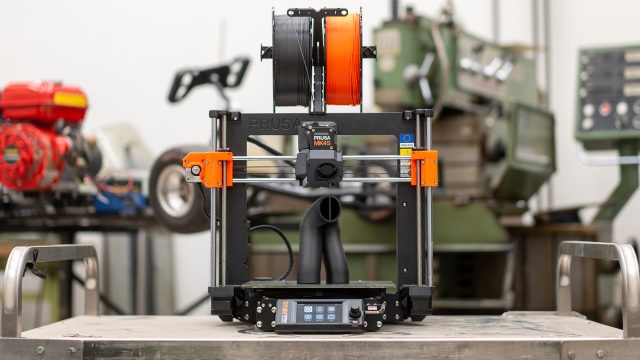

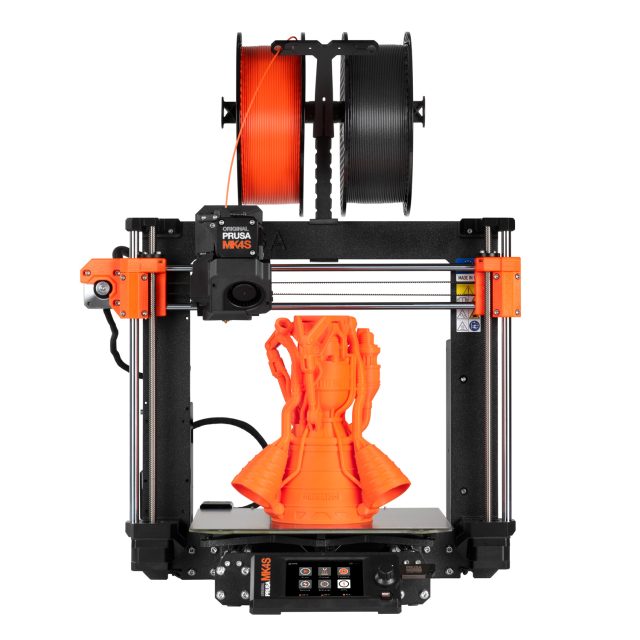
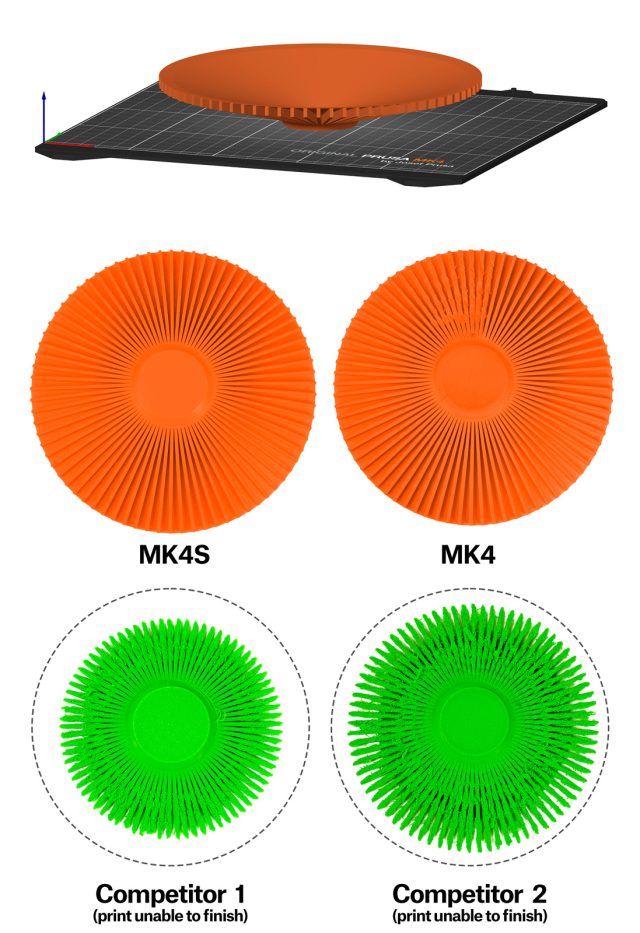
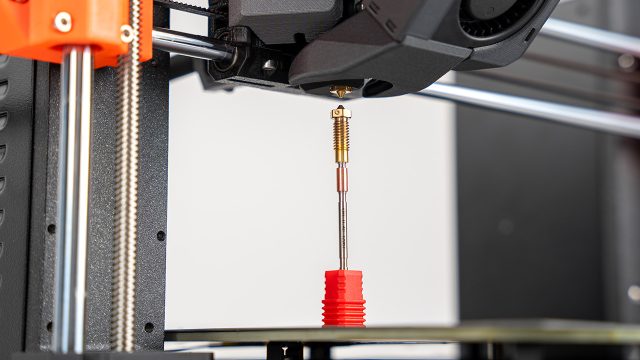
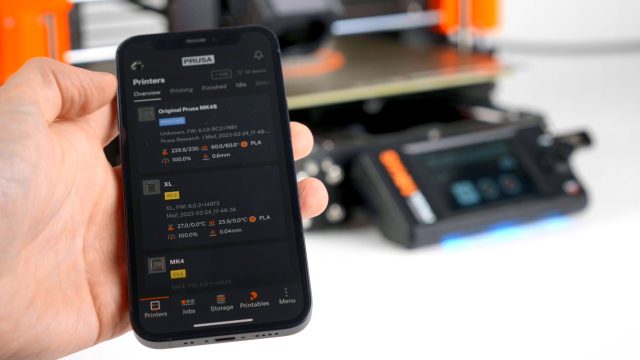

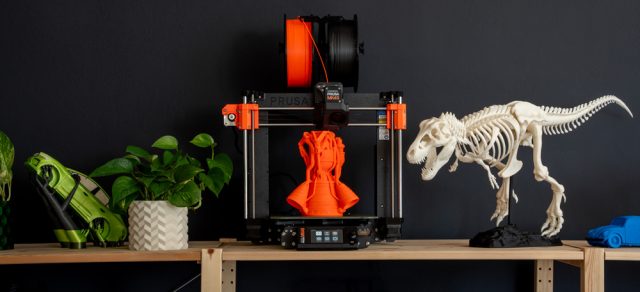

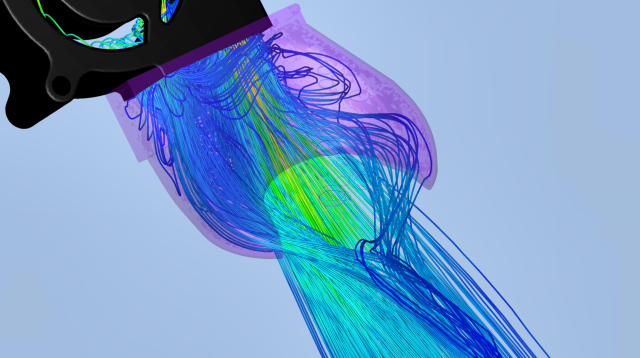

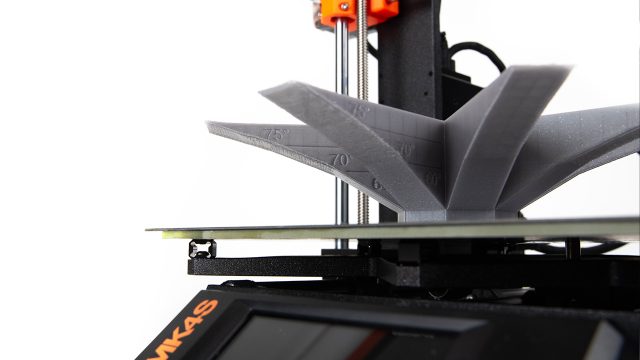
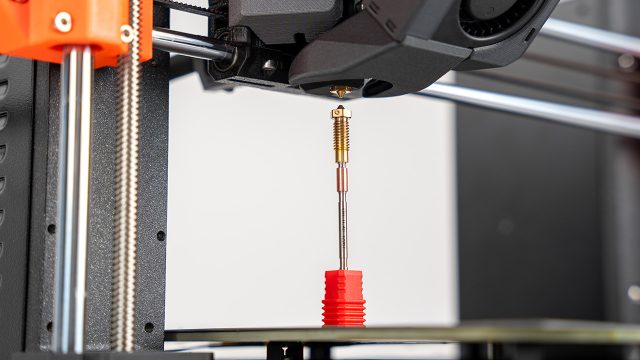
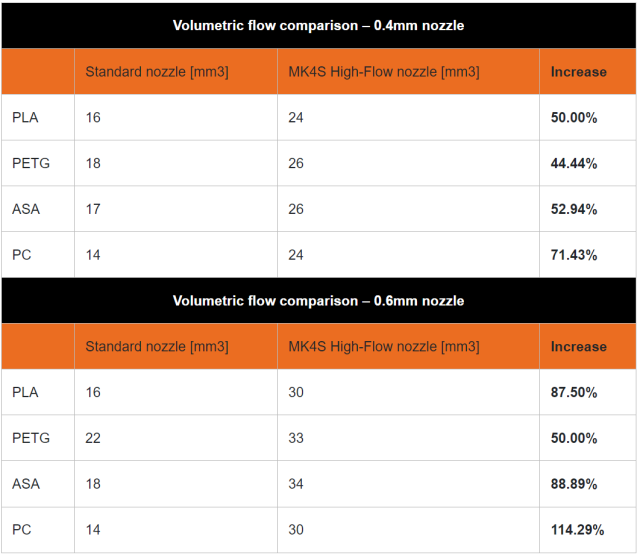
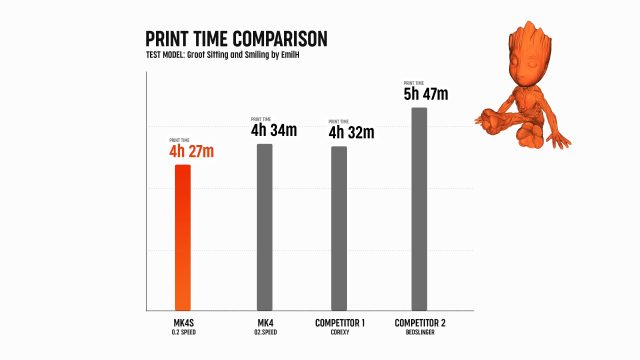
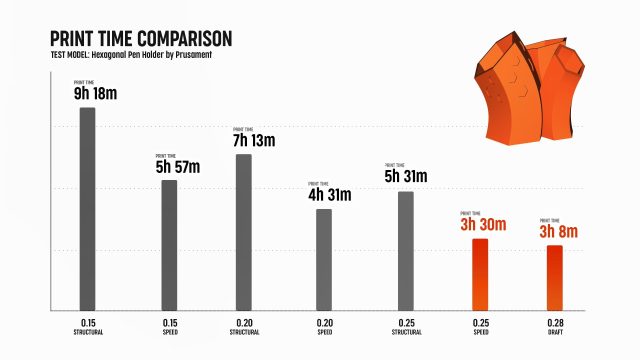
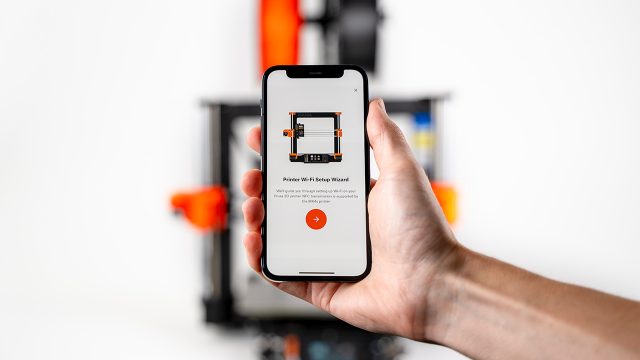
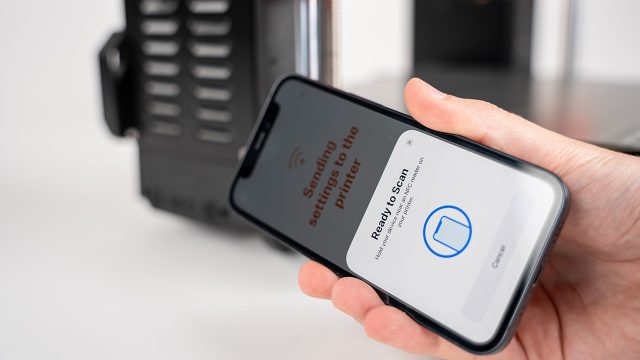
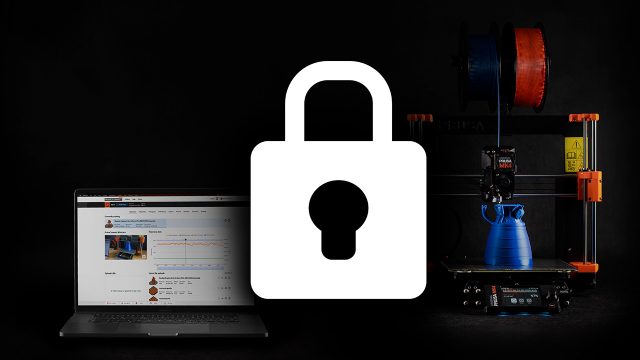
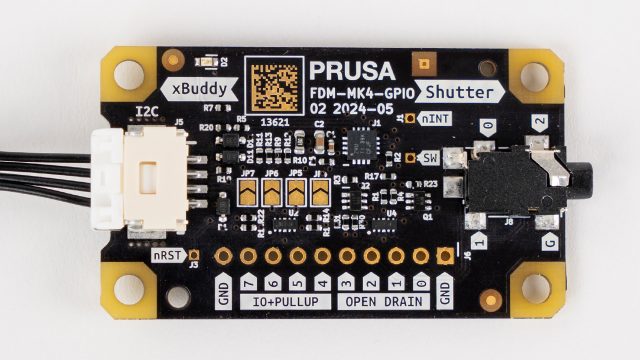
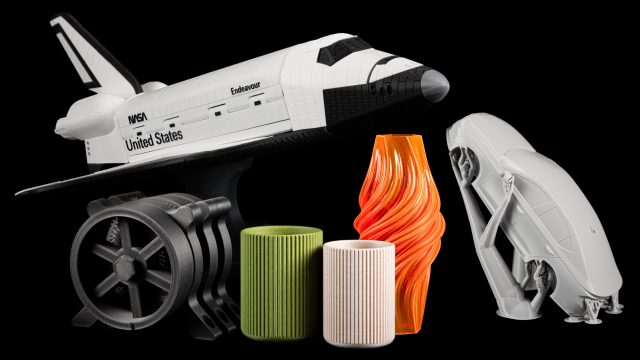
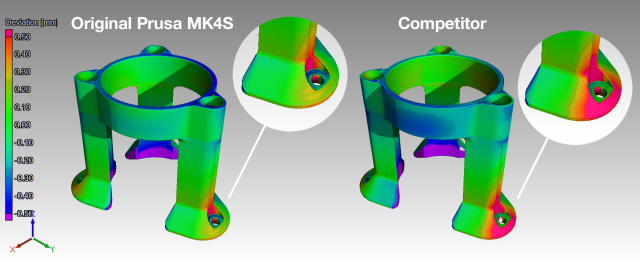
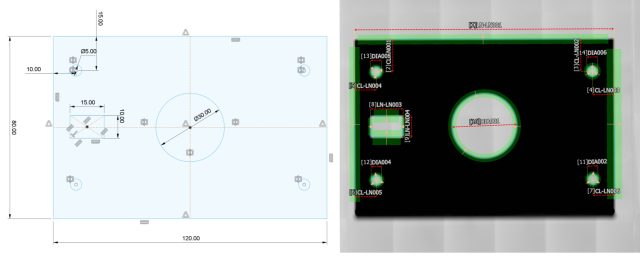
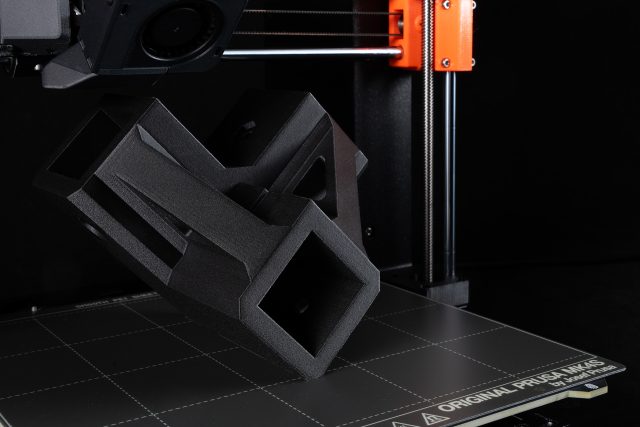
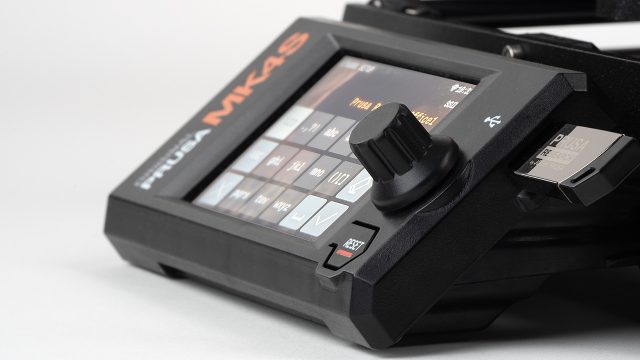
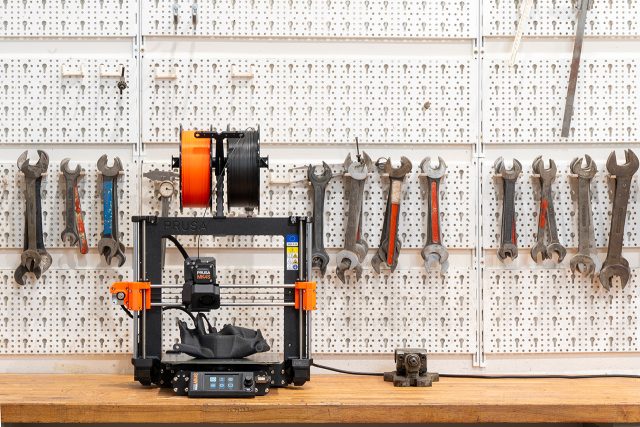
Will the XL recieve simular updates, since they share the nextruder design?
Hello, not at the moment, but we are always exploring ways to upgrade all our printers
Jakub – Prusa Research
That's a quite disappointing answer, Jakub!
Investing quite a lot of money in the XL and recently its enclosure, I expect your flagship kept at the pinnacle of your development. Nothing less.
Yeah, nice. We (the Prusa XL customers) were promised the flagship, a state of the art printer. I am a day-one preorder customer, waited two years just to get an unfinished beta-machine for almost 4000 Euros. And all I get from support are excuses why things don't work or why the printer can't do this and can't do that instead of actual help. I feel so screwed over. And now the MK4 gets some upgrades, but the XL is left out? What did we get? An overpriced "enclosure" that is not worth the name. Hey, there are people out there who actually want to use that machine and not only print some nice optimised pla testprints.
Come one, just confess already that you took on too much with the XL and it will end as an expensive site note.
The upgrade is coming for the MK4 and not for the flagship model? Normally it's the other way around. First for the top of the notch device and then the others follow. Too bad.
I am also disappointed with the housing, as it:
– is very expensive
– contains only one LED strip and
– does not have its own temperature sensor
Well, while exploring, I guess a great way for upgrading your flagship machine might be implementing the same improvements your other printers get?
I would be happy with a new firmware for true IS 🙂
And of course – better cooling and more quality parts in pccf and not petg.
I guess we can get the speed boost by installing E3D high flow CHT XL nozzles?
https://x.com/E3DOnline/status/1823002287863627986
Mark
We really need to see an upgrade for the XL. For what it cost it should be the top of the family and instead its feeling like its a mistake that will be left behind. After I received my enclosure I am sorta really regretting purchasing it as its an almost after thought design. At this point I'm 5K into this printer and don't feel like its anywhere near top of the line. Please let us know something is coming.
Hopefully there's some way to do the 360 cooling with Prusa XL soon.
Of course I ordered my MK4 on July 30, so this is very disappointing that based on this article I'll have to pay for the upgrade.
Yeah ordered mine on July 2, a bit sad
I mean they do have to pick a date they just can't give away the update to everyone who ever purchased an MK4.
I just purchased an MK3S+ to MK4 kit now I'll to purchase an MK4 to MK4S kit. Not thrilled but that's the way it goes.
I mean on the plus, if you either got the free shipping or the voucher so just have to apply those savings to the upgrade.
Have you received it already? As in the EU you can always send it back within 14 days after receiving your order. (for non Business orders that is)
I got mine in Mid July – would be nice to get a better discount.
When will the mk4-mk4s kit upgrade come out? I already have an mk4.
The upgrade kit is linked in the text:
https://www.prusa3d.com/product/original-prusa-mk4-to-mk4s-upgrade-kit-2/
Sounds great, but how about having an official 0.6mm profile for the MMU3 on the MK4 first? That would shorten print times as well… At the moment I have to work with a custom profile, which is a little stupid after the MMU3 has been out for that long. The USB-cable bug also hasn't been fixed for the MMU3. -_-
I'm curious if the CHT nozzle impacts cold pulls in any way (including the automated routine) – Does the internal geometry have multiple paths like other CHT nozzles or something different?
Also the testing hours is written as 4,000.000 which looks more like 4K rather than 4M
Stephen Smith,
Considering that 4 million hours would 462.6 years, I think it is 4 K. 😇
I can see them testing multiple machines at one time, but even if they had 462 of them running, it would take a year! So I doubt *that* happened.
Of course I could be wrong. 🖖😎
Oops… left a word out. Should read:
… 4 million hours would be equal to 462.6 years….
Also, I didn't specify that it would take that long using one test machine. But I'm sure everyone reading got it. 🖖😎
I think the 4M hours could be if you look at their farm. I think they have roughly 700 printers and therefore:
4M hours = 462.6years =(over 700 printers)= 0.667 years/printer
Roughly 8months on each printer of the farm🤔
Will there be an upgrade kit from the mk3s+ to mk4s?
I've read over the part where they say all current orders will be upgraded 😉
Hi guys – FYI there's a typo – "it’s on part with" should be "it's on a par with"
P.S. Woooo! 😀
"All current unshipped orders of the … and MK3.5 … upgrades will be automatically converted to the “S” upgrades".
What are the changes between MK3.5 and MK3.5S?
I'm interested in a MK3.5 -> Mk3.5S kit as well.
Still not showing the app on IOS/Apple Store, but hopefully it’s just a slower rollout. Do you have plans to upgrade the enclosure? It’s been saying there’s future updates coming for well over a year now. Hesitant to spend £350+ on one if there’s a whole new design around the corner.
Nice news about the upgrade, my question:
I use Prusa Nozzle ObXidian nozzle. With PC Carbon, will we have an option to get ObXidian high flow nozzle?
There is no point upgrading if i cant use my carbon filaments.
Thanks for the answer!
Miron
There's already a high flow obxidian in the store.
Will the MK4 to MK4S upgrade kit include the high flow nozzle? Or will that need to be purchased separately?
According to the upgrade kit website the nozzle should be included:
https://www.prusa3d.com/product/original-prusa-mk4-to-mk4s-upgrade-kit-2/
In the Android Play Store, one of the pictures tell "Printables Inside 16000 models at your fingertips". It is 768k ATM 🙂
Although it sounds like a gimmick, but how do you implement NFC feature for MK4S? And do we get the same feature if we upgrade from MK4?
Also, I'd like to see phased stepping coming to MK4(S) and is it going to be implemented, also if so, do we need an accelerometer to enable it?
I guess thats another feature that was already in the Mk4 (just as the touchscreen) and its now getting implemented in the software.
Will the new Prusa app support the Prusa Mini?
The new printer is GREAT! So sad that I purchased 0.25mm, 0.6mm, 0.8mm and 0.4mm Obsidian nozzles before this release of high flow rate nozzles. I guess that I just wasted money on these nozzles. I will stay with MK4 for a while I guess before upgrading to MK4S. MK4 is a GREAT 3D printer already.
Same here! :/
yep! the same! but with " :-)" smiley: MK4 rocks at the moment: 6.0.4 firmware, slicer 2.8, and XObsidian nozzle. It produces excellent quality in a very reproducible pulse. I print around 6h per day in average for a small business. MK4 is a real workhorse! Why bother about MK4S then? More speed? And with the same quality too? Steeper overhangs? Nope! Sorry to say, but I will better let others test this and see what comes out 😉 If an update comes for XL which will get XL on the level of MK4 today (not MK4S), I will buy it, but with a sad note, since I was expecting XL to deliver the same quality of prints as MK4, which it still does not
I’m not complaining either. But the update lacking the ObXidian high flow option is a big factor for me to consider. Printing regularly with the PCCF material. So switching nozzles that frequently is a no go for me.
Same here, just for all 5 heads for the XL. Can't afford to do that again…
Hi. The app is great, but whenever I try to post a make of a model, I can't upload photos through the app, and I need to use the website. Also can you add a "Printables-only mode" where you can access only Printables and don't need prusa connect to access the app? Because I don't have a Prusa printer (yet?) and I needed to mess around with Prusa connect to even go past the welcome screen.
This is great news. The updates bring almost exactly the missing things that kept me from buying it.
Good work!
SnapTube APK is Best Online Video Downloader App With New Exciting Features! SnapTube Helps You to Download Videos and Music Mp3. https://snaptubes.com.co/
Question. How is Nozzle Swapping on the MK4S?
With the MK4 there is that quick-change tool you can print that holds the Heater in place while you swap the nozzle. The new assembly looks incompatible with that and i'd rather not go back to having to disconnect/reconnect cables. Those Clik-mate connectors are NOT designed for constant insertions.
The article says you should still be able to use an adaptor to just unscrew the nozzle. Honestly, the 3d printed tool is nice, but if everything is cooled down I'll just hold the hotend with my hand or a towel and hold it while I change out the nozzle. The tool is nice to have, but you can certainly swap just the nozzle without it assuming nothing is too hot to the touch.
Any plans for a MK3.5 -> MK4S upgrade kit?
Upgrade from mk3.5 to mk4s would be cool.
I definately would buy a MK3.5 to MK4S upgrade kit! Count me in 🙂
Great upgrade!
I only wonder about the motivation to change some parts to PCCF. I worry that parts from CF reinforced filaments might not be safe to be touched with bare hands as the carbon fibers are not completely enclosed by the plastic (or epoxy as with common CF parts)…
Just buy a spool of Prusament PCCF and watch what comes out! Yes, the material is twice the price, but the result is a least twice better for a buck in many aspects!
Im also worried about the fibers. The parts should be clear coated to avoid microscopic fiber parts getting stuck in the skin. Maybe Prusa figured out some way, or they maybe clear coat it, but all CF filaments unfortunately bring up the same worry.
Is there an official build of MK4/MK4S with MMU3 unit AND Enclosure?
Tested and verified placement, ideally with the buffer inside the unit and filaments above it (e.g. in Prusa Repbox), etc.
As that could be a nasty surprise for those who order the full bundle (MK4S, MMU3, Enclosure) for 42790 CZK only to find out, the Enclosure is not supported by MMU3…
Nice improvements.
Just to bad that I ordered mine in June and get nothing :'(
Not worth to upgrade right now, happy with my mk4 (with mmu3 and enclosure) as it is.
Just the docs for the upgrades and mmu3 (so the above combination) was a bit tricky.
So I was wondering. Were there any changes to the filament sensor? I saw the 4 million hours before I bought my mk4, but it's clear that you didn't run those with a filament sensor. Like how the sensor was finally fixed properly on 3S+, when my brand new mk4 failed the filament sensor on the second print, I just put my mk4 on the shelf until you guys fixed the design.
Has there been any changes to the filament sensor design?
Very few report any issues with the Filament Sensor. Like its one of the rarest parts to actually fail due to its Mechanical Hall effect based design and highly reliable. Compared to the old Optical Filament sensor which had tendency to fail seeing anything transparent within the Infrared domain.
This very much reads as a issue within your particular unit, rather than a design issue.
I would encourage to contact Prusa's support on this to figure out how your unit is failing on this aspect. Assuming its just a design thing and waiting for that to change for reasons just leaves your printer collecting dust.
Will the MK4S upgrade kit be available on printedsolid.com for pre order?
Will there be a specific MK4+ MMU3 > MK4S + MMU upgrade kit, or will the standard MK4 > MK4S upgrade kit be compatible with the MMU3?
I second this question. It would be nice to know, since there is already a slicer profile for MK4S+MMU3.
Btw: When will the other nozzles sizes for the MMU be released? It's been a wile…
Reading through the instructions for the 4S upgrade, I found that the idler arm is replaced. I'm wondering if that is just bringing the MK4 to the MMU3 version? Can the MMU3 owners can skip that or is it more different than the MMU3 idler upgrade?
That's a nice question…
Also interested
Good question, i assumed that the Mk4 to Mk4s kit was compatible with my MMU3…so i ordered the Mk4s upgrade kit.
Should we wait for a different upgrade kit or the current one is indeed compatible with the mmu3?
My 4S Upgrade kit arrived and I have it installed. A 14min Benchy is hilariously fast.
Part of the kit has new belt holders for Y-axis, which were identical revision and material to my recently new 4K I bought, but I changed them anyway. The Idler Arm on the Nextruder is more robust on the MMU3 kit, so I left that one on. I like the new LCD casing as well. The instructions recommended keeping my old nozzle since I have a MMU3, but I got this kit to get the speed. So far it's worked great with the CHT nozzle and a MMU3. Firmware update has nice manual Network settings now, but still doesn't login to my 2.4GHz WI-FI, doesnt see 5GHz. (The MK4 adapter never logged in either.) Ethernet works fine.
Is the XObsidian Nozzle also with the MK4S Upgrade compatible?
The MK4S has profiles for both the new HF nozzles and the regular nozzles.
So you can use your regular (Obxidian) Nozzles just as you did prior. You won't see any increase in speed, but you will still benefit from the new Part-cooling fan and see improvement on quality.
Will new Wi-Fi module support 5GHz?
Good question. I'd like to know as well.
Update, no 5GHz, but does link 2.4GHz to my phone's hotspot. I just can't seem to get it on my home wifi, despite having a whole house of smart devices on the 2.4GHz band. 🤷♀️
Ordering page says not compatible with mk3.9, but basically only the frame is different to mk4, no difference in the parts being upgraded.
So do I have to wait for a special mk3.9 > mk4s kit? And when will this be available?
Steen
Oh yes and of course the stepper motors… so maybe it is some tuning you need to do?
Forget it… I found the 3.9 to 3.9s kit
Looking forward for another upgrade of my printer ,-)
Will there be a spare parts kit for the MK4S soon?
How does the new CHT nozzle work for tip forming and ramming with the MMU3?
Will a CHT nozzle be made available for people who use the V6 adapter?
I have the same question about how CHT nozzles affect tip forming when using the MMU3. My understanding is that the MK4S will have separate profiles for the CHT and regular nozzles. If so, then on my MK4S with MMU3, I can use the older nozzles and still have the improved cooling (cleaner prints and overhangs) without the higher speed that can be achieved on my other MK4S (that does not have an MMU3). Even so, it would be nice to have the higher speed on my MK4S+MMU3, so an answer regarding tip forming with CHT nozzles would be appreciated.
Will the prusa mini get an upgrade like this?
Looked at the Nozzle swapping instructions more closely and the new nextruder assembly.
For swapping nozzles i think it may be easier to just dismount the Blower fan from its supports and then use the "Nozzle Replacement tool" anyway. Than go through the entire ordeal of removing the entire hot-end assembly and risk stuff like wearing out the connectors, silicon sock or pinching the cables.
I really don't want to go back to doing all that just cause i needed a bigger/smaller nozzle for one print. It is very inconvenient to the point it kind of defeats the purpose of new nozzles and make me consider going V6 if it wasn't for that little tool…
It would be awesome if you guys linked to the models that you use in these posts and on product pages on the website. What is that space shuttle model? 😀
I ordered on kit, however is not clean to me:
– Is the MK4S printer an MMU3 ready printer ? 🤔
I mean after installing the MK4S upgrade kit on my MK4 (has no MMU3) it will become a Nextruder modified ready printer for the MMU3 and in case of MMU3 future installation it will require only the wiring of the MMU3 unit.
You'll still need to move the filament sensor.
Looking in the Prusa store for Nextruder nozzles and I see both "Highflow" and "CHT" brass nozzles. Can we expect the same printing performance between the two?
That are the updates, the community was looking for.
Acclerometer for IS, better cooling,… things my XL would je happy about. XL lacks both – IS and Cooling. Hope that the flagship will be updates soon. Im a little bis frustrated right now…my XL is in repair and i am feeling like a beta tester. Mk4 is still producing more quality while printing too.
BUT Prusa – your Support is by far the best. Other companies, telling me that kind of issues are in there „tolerance“…. People will know what i mean 🙂
i wish prusalink got the same features as prusaconnect. why is the ui and feature set so different when i'm accessing the same printer over the same network?
I'm interested in upgrading the MK3S+ to the MK4s.
I would very much appreciate, if the printed parts would be available a a separate buy.
Would you consider that?
Still waiting for news about the enclosure "smart box". Since the GPIO thingy is now out isnt it just that but ready made prusa stuff… Give us at least some update about it.
that a good one
Charging 1,100 bucks for a bed slinger without an enclosure in 2024
Lmfaoooooo
$100 +$15 shipping for a fan and a high flow nozzle? This is price gouging.
The mk4 should have come with a CHT or volcano block from the beginning. You launch a flawed product and now you're punishing your early adopters for it.
Your forum contributions are extremely insightful, and we would appreciate it if you left feedback on the <a href="https://lol-beans.com/">lol beans</a> website so that we could continue to develop it. Additionally, we would like to honor you for your insights.
Download Insta Pro APK Updated Version For Android. Instagram Pro Developed by Sam Provides Extra Features like Hide Stories, App Lock & Font Styles. https://instapro.net.co/
Insta Pro is a modified version of Instagram that allows users to download photos & videos from Insta. Download Instagram Pro Latest Version 2024. https://instapro.dev/
I upgraded my MK4 to the MK4S (hardware, firmware and software) and the gcode Benchy from Prusa prints in an amazing 14 minutes vs. the 28 minutes my MK4 did. None of my previous prints are any faster. Am I missing something? I have selected the MK4S printer, are there speed settings I need to change that don't automatically when I select the new printer profile?
Any help would be appreciated.
Thanks.
Our informative <a href="https://elitebookpublisher.com/">elite book publisher</a> use the most accurate and specialized writing style. We conduct an extensive study to create an informative book
Dacă sunteți o persoană care joacă jocuri de noroc și vă dați seama că trebuie să încercați urgent jocurile de cazino, atunci eu aici, după ce am evaluat tot ceea ce ne este oferit în prezent pe piața jocurilor de noroc, vă pot spune că favoritul meu este Vulcan Vegas <a href=https://ro-vulkan-vegas.com/>https://ro-vulkan-vegas.com/</a>